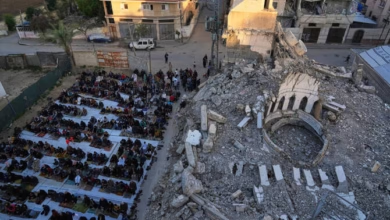
Key Takeaways:
Recent U.S. airstrikes in Yemen, targeting Houthi military sites in Sanaa, Saada, and Al-Bayda, have raised concerns among Yemenis about the possibility of the war escalating. With ongoing threats from both the Houthis and the U.S., there are growing fears of a renewed conflict. Experts speculate that President Trump’s administration may intensify military actions against the Houthis, especially if they continue targeting international shipping routes, but the complex humanitarian situation in Yemen remains a significant challenge.
Recent Developments in Yemen: A Rising Tension
In recent months, Yemen has witnessed a noticeable escalation in military tensions, highlighted by recent U.S. airstrikes targeting Houthi military positions in Sanaa, Saada, and Al-Bayda. These strikes, which have led to civilian casualties, reflect the U.S. administration’s determination to curb Houthi influence, particularly as they have continued to threaten international maritime traffic in the Red Sea, which has raised regional and global concerns.
The Houthi Escalation and Regional Dynamics
Since the outbreak of the war in Gaza, the Houthis have become more vocal in their support for Palestinian resistance, notably by targeting Israeli-linked commercial shipping in the Red Sea. This escalation adds another layer of complexity to the Yemen conflict, with the Houthis demanding international aid for Gaza while threatening to resume attacks if humanitarian aid is not delivered. This stance has garnered sympathy in the Arab and Muslim world; however, for Yemenis living under Houthi control, the already dire humanitarian situation is further exacerbated.
U.S. Objectives in Recent Airstrikes
The recent U.S. airstrikes appear to have clear strategic goals: to stop Houthi attacks on international shipping and to send a strong message to Iran regarding its support for the Houthis. However, despite the strength of these airstrikes, they are unlikely to lead to the collapse of the Houthi regime, which has withstood over a decade of military pressure.
Challenges of a Ground Intervention
A U.S. ground intervention in Yemen remains unlikely due to the high material and human costs, coupled with the absence of direct strategic interests for the United States in Yemen. However, should Houthi attacks on international shipping continue or if efforts to reach a comprehensive ceasefire in Gaza fail, the Trump administration may feel compelled to escalate its military response.
The Yemeni Government’s Role and the Path to Peace
Amidst the political and military fragmentation within Yemen, the internationally recognized government lacks full control over its armed forces, making a rapid military campaign against the Houthis difficult. Various factions, including the Yemeni military, forces aligned with the Southern Transitional Council, and those led by Tariq Saleh, remain fragmented, complicating the possibility of a unified anti-Houthi front. Unfortunately, Yemen currently lacks the political leadership necessary to unite these factions under one banner.
The Political Solution and Hopes for Peace
Ultimately, peace remains the most hopeful prospect for Yemenis. Many hope the Houthis will realize the risks of continuing their attacks on international shipping or challenging the U.S. administration. A fair and comprehensive peace agreement is the best solution for Yemen, but it will require compromises from all parties involved to halt the war and pave the way for stability and reconstruction.
Conclusion: A Call for Yemeni Wisdom
Despite the ongoing suffering caused by the war, Yemenis still hope that wisdom and reason will prevail over the drums of war. It is imperative that all parties, including the Houthis and the internationally recognized government, work together to find a lasting peace that can bring security and prosperity back to Yemen after years of hardship.
Keywords:
Yemen, U.S. airstrikes, Houthis, Yemen war, Yemeni peace process, military intervention, Trump administration’s policy, humanitarian crisis in Yemen.
- Source: ALJAZEERA NEWS








